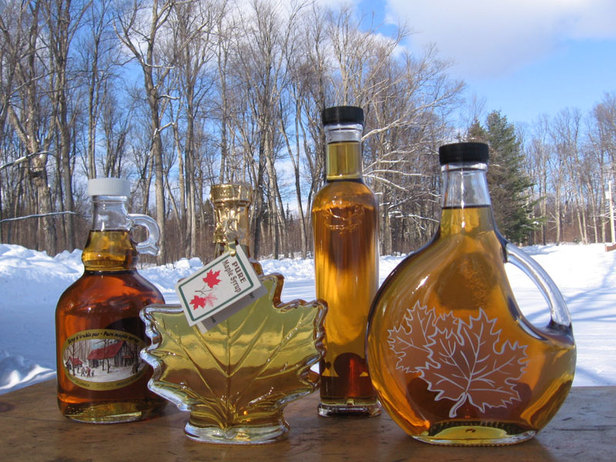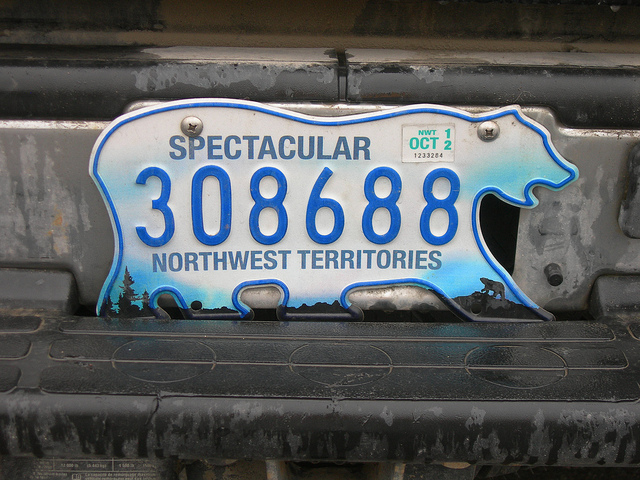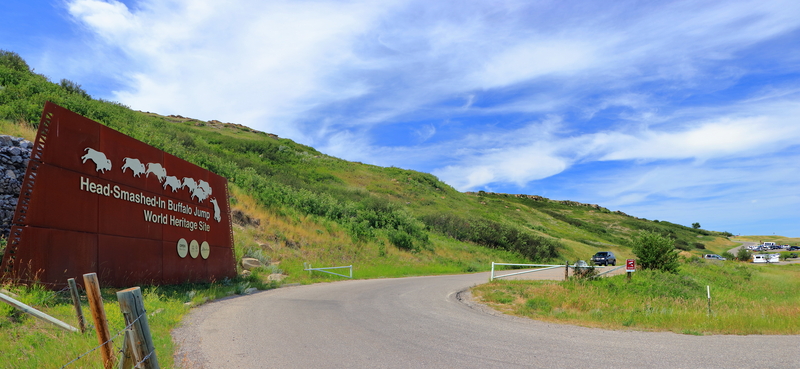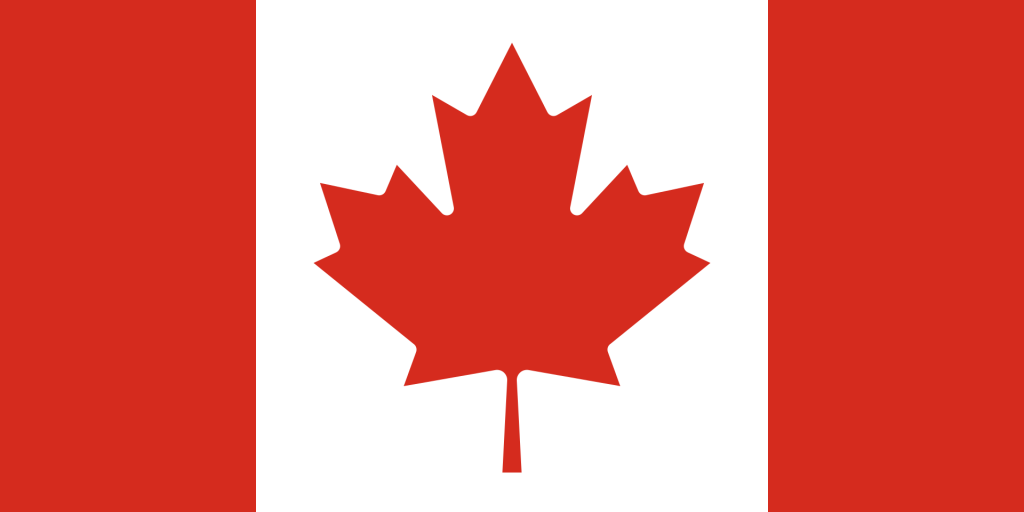Last updated on October 19th, 2022
Canadian food
51. Did you know Canadians eat more macaroni and cheese than any other country? It’s a strange fact and there’s no real reason for it, but it’s actually been proven with Kraft being their favorite. And the country has been in love with this food since before 1845!
52. Speaking of favorite foods, this country, known for Tim Horton’s, is also responsible for having the most donut shops per capita than anywhere else. Throughout the entire world there is not one country that surpasses them. So it’s definitely going to be a great place to get some breakfast.
53. They’re even known for the oldest brewery in North America and not only did they start it but the brewery is still running. Molson Coors Canada produced Molson Canadian beer and they are still making it right where they started in 1786.
54. While this may not be surprising, it’s still an interesting fact, that approximately 77% of the maple syrup produced in the entire world is made right in Quebec. Yep, they really do love their maple syrup and we definitely love sharing it too.

55. If you’re looking to take some beer to a friend in another province you’ve better be careful because even though they consume a lot of beer (approximately 80% of the alcohol they drink is in fact beer) you are not allowed to move it to another province. At least, you can’t do it without permission.
56. There are no hormones in Canadian dairy products. That’s because they don’t allow any kind of hormones to be given to the cattle. So if you’re looking for a healthy and all natural drink, you’ll find it in the milk.
57. Looking for some good water? You may be surprised to know that the tap water in Canada is actually better for you than the bottled water! It’s going to taste better too so why not save a little money and stick to the cheaper stuff?
Checking Out Cars
58. In the more northwest territories of Canada it didn’t used to be uncommon to see license plates that are actually shaped like a polar bear. Wouldn’t that be something to find when you’re driving down the road? It’s definitely worth at least 5 points on your license plate car game.

59. Speaking of bears, in some areas of Canada drivers actually leave their cars unlocked all the time, not just because they feel safe that no one will take it, but because they want to make sure people can escape from the bears. Yes, there are actually enough bears in Canada, that come right out in the open, that people need to have a quick escape and jumping into someone else’s car is the best way to do it!
The United States and Canada
60. The Mall of America is the largest mall in the United States, but did you know it’s actually not owned by anyone in the US? Nope, this giant mall is owned by Canadians instead! Bet they’re not trampling all over each other for that Black Friday sale …
61. The United States has actually tried to invade Canada during two different wars and failed both times. Turns out, the nicest people around are also pretty good at defending themselves and their country. They aren’t letting anyone else in charge.
Checking Out Money
62. There is actually a coin with a narwhale on it in Canada. It’s a pretty cool piece and made with gold too. But before you go trying to buy one you should know it’s valued at $300. So you’re going to need a pretty penny (quite a few of them) in order to get one.
63. If you have a lot of money though you can skip the narwhale coin and get one that’s actually $1,000,000. That’s actually the value of the coin and you could (if you had that much) walk into a store and actually use it (provided they have the money to give you some change back).
64. Looking for something even cooler? Well then you’ll love the fact that Canada has a special edition quarter that actually features a dinosaur! And not just any dinosaur, a glow-in-the-dark one! Does it get any better than that?

Interesting Names
65. There are several heritage sites in Canada but there is definitely nothing so interesting as Head-Smashed-In Buffalo Jump. Yes that is a real place and it’s located near the Rocky Mountains and the Great Plains. Definitely something you’re going to have to visit someday because who can resist?
66. You’ve probably heard the word loony before but did you know that in Canada Loonies (and Toonies too) are actually a form of currency? It doesn’t mean Crazy Aunt Jane, but it does mean a $1 or $2 coin that’s actually part of their currency.
67. They actually have a city that not only has the term Ha Ha’ in it, but it’s also the only town anywhere in the world to have exclamation points, two of them. Saint-Louis-du-Ha! Ha! Is located in Quebec and it’s near the Saint Laurence River.
Strange Canadian Laws
68. It’s actually illegal to have a comic book that shows anything to do with crimes. That definitely wouldn’t go over too well with most fans of comic books since it seems almost all of them have crimes right? Otherwise what would the bad guys be fighting?
69. Polar bears are not allowed to break into your house and steal your food. So if you see one rummaging through your fridge you can call the cops and have them arrested! That may be a slight exaggeration but there actually is a jail for polar bears that steal food.
70. You can actually apologize in a court of law. We’re not just talking about saying you’re sorry for doing something. You can actually sign a document that instead of announcing your guilt announces that you legally and officially apologize for the act and that can be as good as a punishment!
There are definitely some interesting facts about Canada and that’s going to get you wanting to travel over there just to check some out. Wouldn’t it be cool to see a polar bear shaped license plate after all? But there’s definitely plenty of other reasons to check out this pretty cool country.
About the Flag of Canada

1. Design and Symbolism
The flag of Canada expresses a distinct national identity that sets it apart from past banners. It features a red field with a central white square containing a single maple leaf. Red and white are the official colors of Canada, while the maple leaf is one of the best-known emblems of the country.
The first mayor of Montreal described the maple tree as the king of the forest and a symbol of the Canadian people. Its leaf is in the coat of arms of Ontario, Quebec, and Canada. It also appeared in Canadian coins and military badges before its inclusion in the flag.
2. Adoption
Canada adopted the flag on February 15, 1965. George F.G. Stanley designed it based on the banner of the Royal Military College, where he was a teacher. Stanley avoided divisive symbols, such as the Union Jack and the fleur-de-lis. He chose a single red maple leaf for instant recognition, simplicity, and tradition.
3. Technical Details
The flag dimensions have a ratio of 1:2. It is horizontally symmetric, ensuring that the front and back appear identical. Most triband designs divide the field into three equal parts, but the Canadian flag has a white band that occupies half its length.
Physical reproductions can use the CMYK value 0/100/100/0 for accurate coloration. For digital images, the RGB value is 255-0-0. The HEX equivalent is FF0000.
4. History
Early Flags
In 1497, John Cabot led an English expedition that reached Newfoundland carrying the Cross of Saint George. This flag has a red cross on a white background.
In 1534, Jacques Cartier planted a 10-meter cross in Gaspé with the fleurs-de-lis and royal coat of arms. These are elements of the Bourbon Flag or the Royal Banner of France.
The UK Flags
In 1621, the British settlement in Nova Scotia used the Union Flag. The practice continued for centuries. Population expansion, economic aspirations, and military threats led Canadian colonies to form a united federation in 1867. Their flag was a Union Jack with the emblems of member provinces on a shield. It later changed to a Red Ensign with the coat of arms of Canada.
The Great Flag Debate
In the 1960s, many yearned for an official flag free of foreign symbols and distinctly Canadian. However, conservatives wanted to keep the Red Ensign. Prime Minister Lester B. Pearson led the change and formed committees for design selection. The members went through 2,000 public suggestions and 3,900 archived submissions since 1945. The final vote was unanimous in favor of the George Stanley maple leaf design.
5. Flag Facts
The Pearson Pennant
The other finalist in the flag selection process was the favorite of the Prime Minister. Alan Beddoe designed the triband with three conjoined maple leaves at the center. The blue bands along the edges reflect Canada’s motto: “Sea to sea.”
Practical Leaf Design
The original Stanley design had a 13-point maple leaf. An 11-point leaf replaced it as a practical choice. The latter maintained better clarity in wind tunnel tests that simulated high-wind conditions. The design is by graphic artist Jacques St-Cyr.
Canada – country at a glance
| Location | Northern North America, bordering the North Atlantic Ocean on the east, North Pacific Ocean on the west, and the Arctic Ocean on the north, north of the conterminous US |
|---|---|
| Independence | 1 July 1867 (union of British North American colonies); 11 December 1931 (recognized by UK per Statute of Westminster) |
| Capital City | Ottawa (45°24′N 75°40′W) |
| Largest City | Toronto (43.7000° N, 79.4000° W) |
| Area | total: 9,984,670 sq km land: 9,093,507 sq km water: 891,163 sq km (slightly larger than the US) |
| Population | 40,218,137 (2025 est.) |
| Official Language | English and French |
| Demonym | Canadian |
| Borders | United States, Greenland, Saint Pierre and Miquelon. |
| Currency | Canadian dollar ($) (CAD) |
| Religion | Christianity, and Islam |
| Government type | federal parliamentary democracy (Parliament of Canada) under a constitutional monarchy |
| Monarch | Charles III |
| Prime Minister | Mark Carney |
| Life expectancy at birth | 84.2 years (2024 est.) Life expectancy at birth indicates the number of years a newborn infant would live if prevailing patterns of mortality at the time of its birth were to stay the same throughout its life. |
| National day | Canada Day, 1 July (1867) |
| Climate | varies from temperate in south to subarctic and arctic in north |
| Coastline | 202,080 km |
| Terrain | mostly plains with mountains in west, lowlands in southeast |
| Mean elevation | 487 m |
| Lowest point | Atlantic Ocean 0 m |
| Highest point | Mount Logan 5,959 m |
| Natural resources | iron ore, nickel, zinc, copper, gold, lead, rare earth elements, molybdenum, potash, diamonds, silver, fish, timber, wildlife, coal, petroleum, natural gas, hydropower |
| Agricultural land | 6.8% |
| Birth rate | 10 births/1,000 population (2024 est.) |
| Death rate | 8.2 deaths/1,000 population (2024 est.) |
| Sex ratio | 0.98 male(s)/female (2024 est.) |
| Suffrage | 18 years of age; universal |
| National anthem | "O Canada" |
| National symbol | maple leaf and beaver |
| National colors | red and white |
| Industries | transportation equipment, chemicals, processed and unprocessed minerals, food products, wood and paper products, fish products, petroleum, natural gas |
| Exports | $727.831 billion (2024 est.) crude petroleum, cars, natural gas, refined petroleum, gold (2022) |
| Imports | $733.778 billion (2024 est.) cars, refined petroleum, vehicle parts/accessories, trucks, crude petroleum (2022) |
| GDP - per capita (PPP) | $56,700 (2024 est.) |
| Internet country code | .ca |
| Time Zone | (UTC−3.5 to −8) |
| Calling Code | +1 |
| Drives on the | Right |
| Table last updated | September 28, 2025 |
